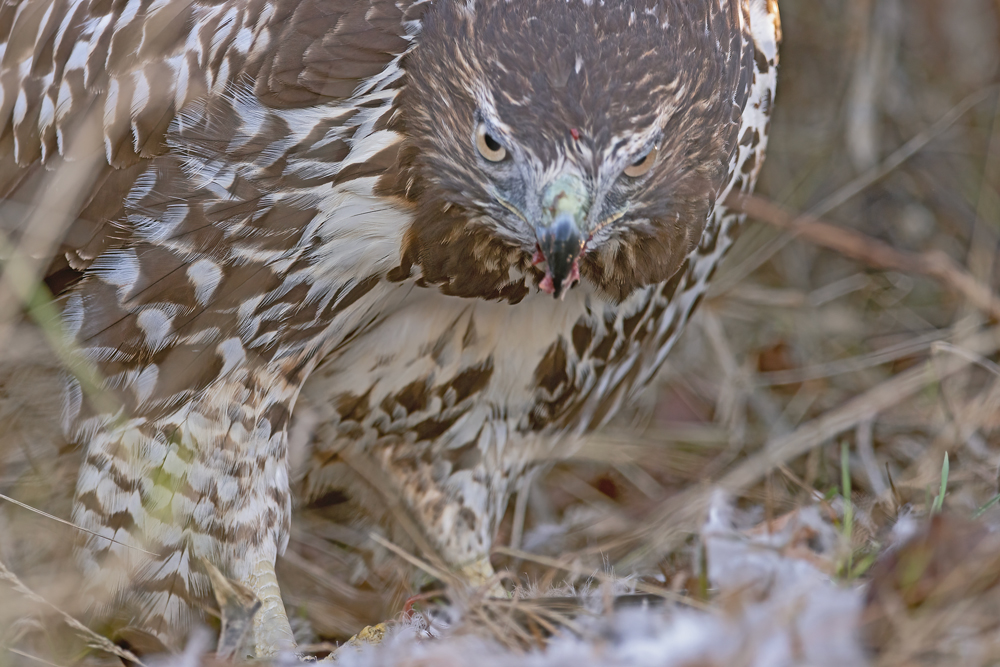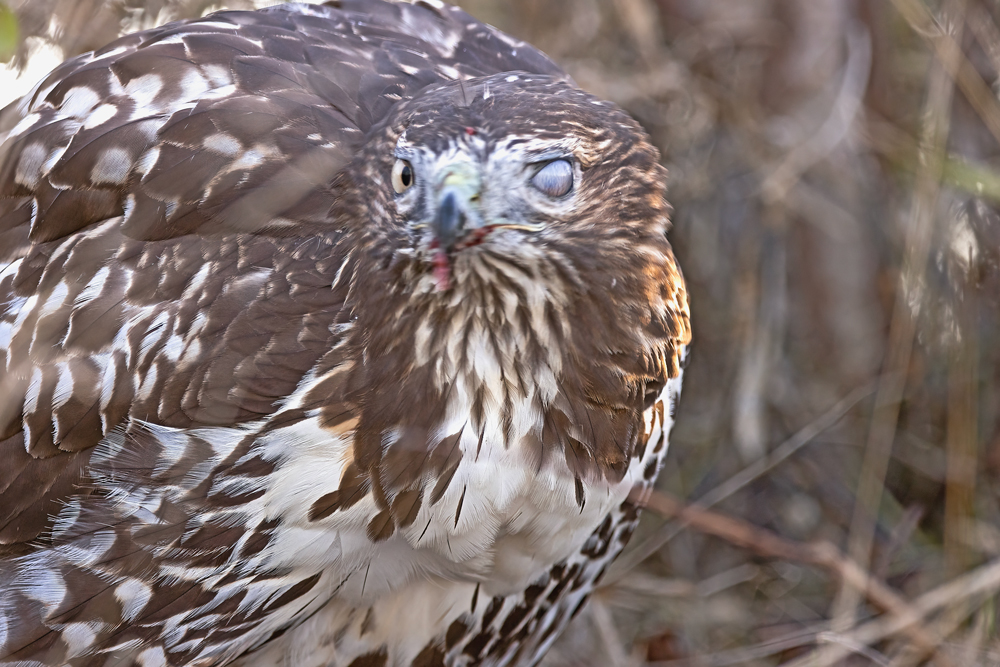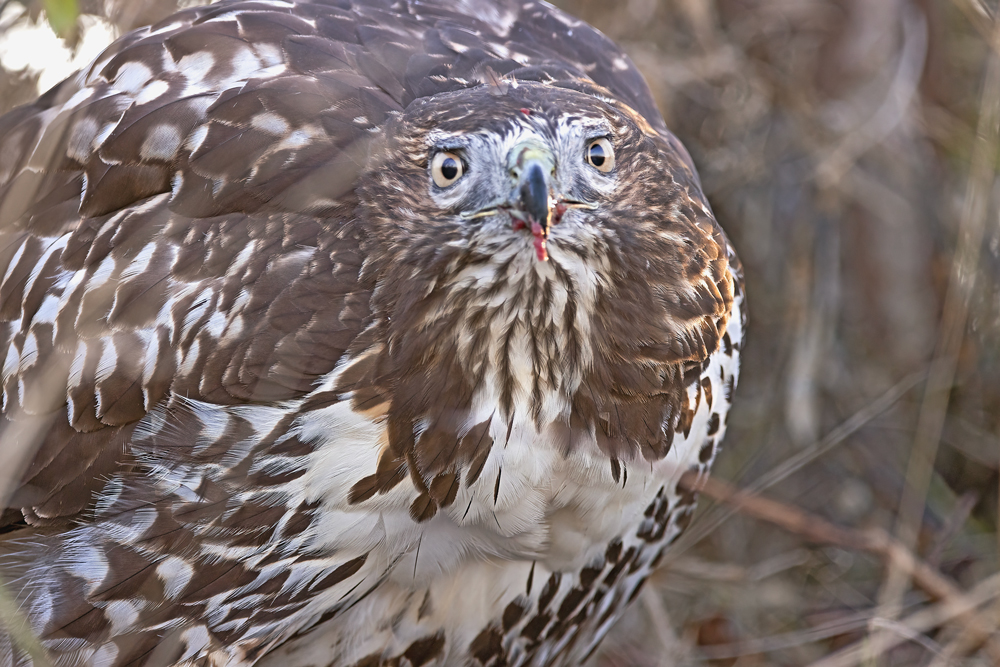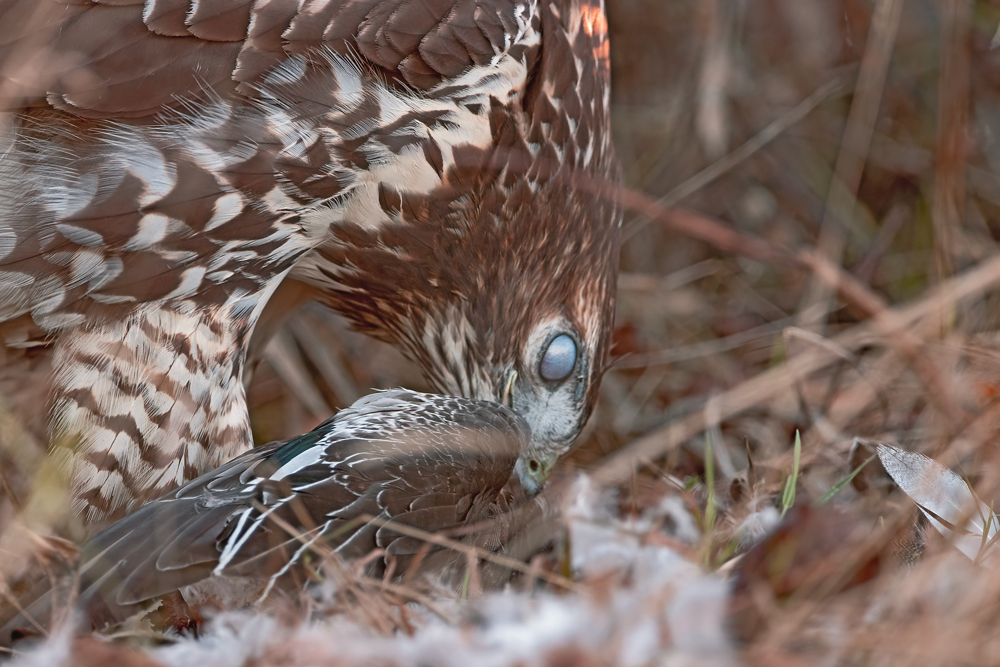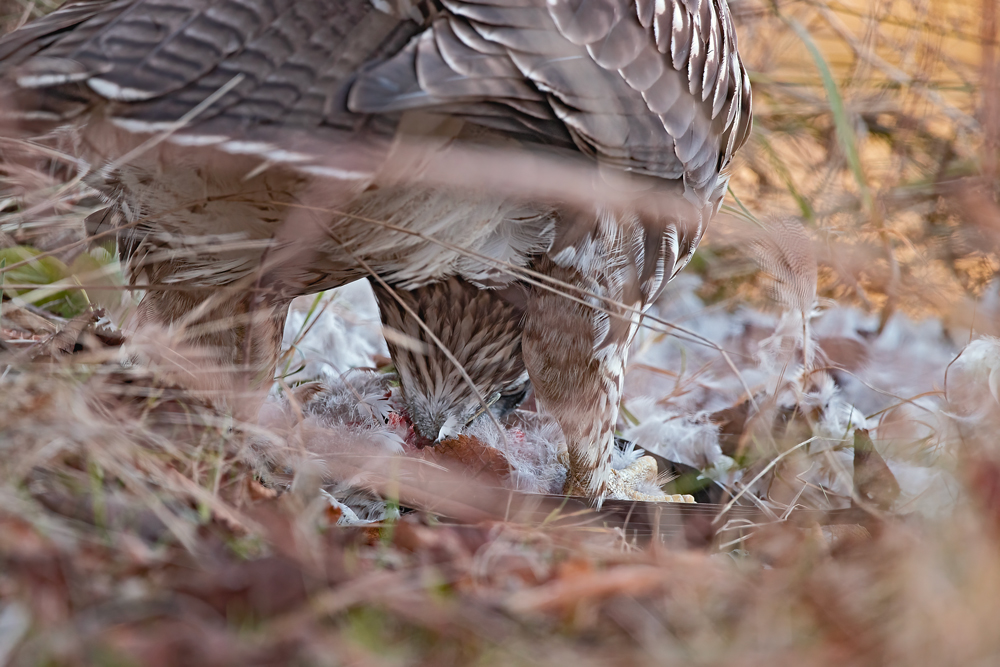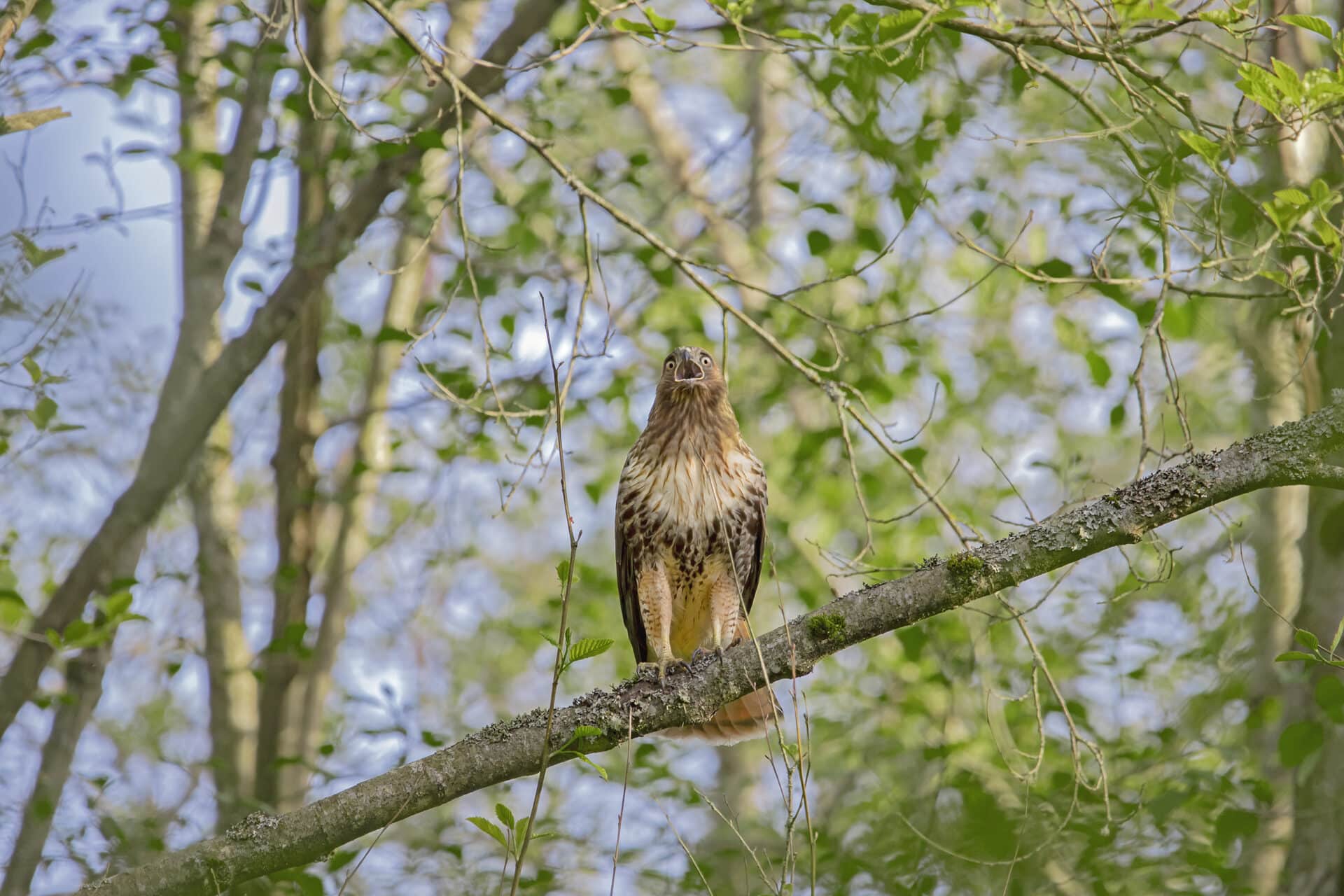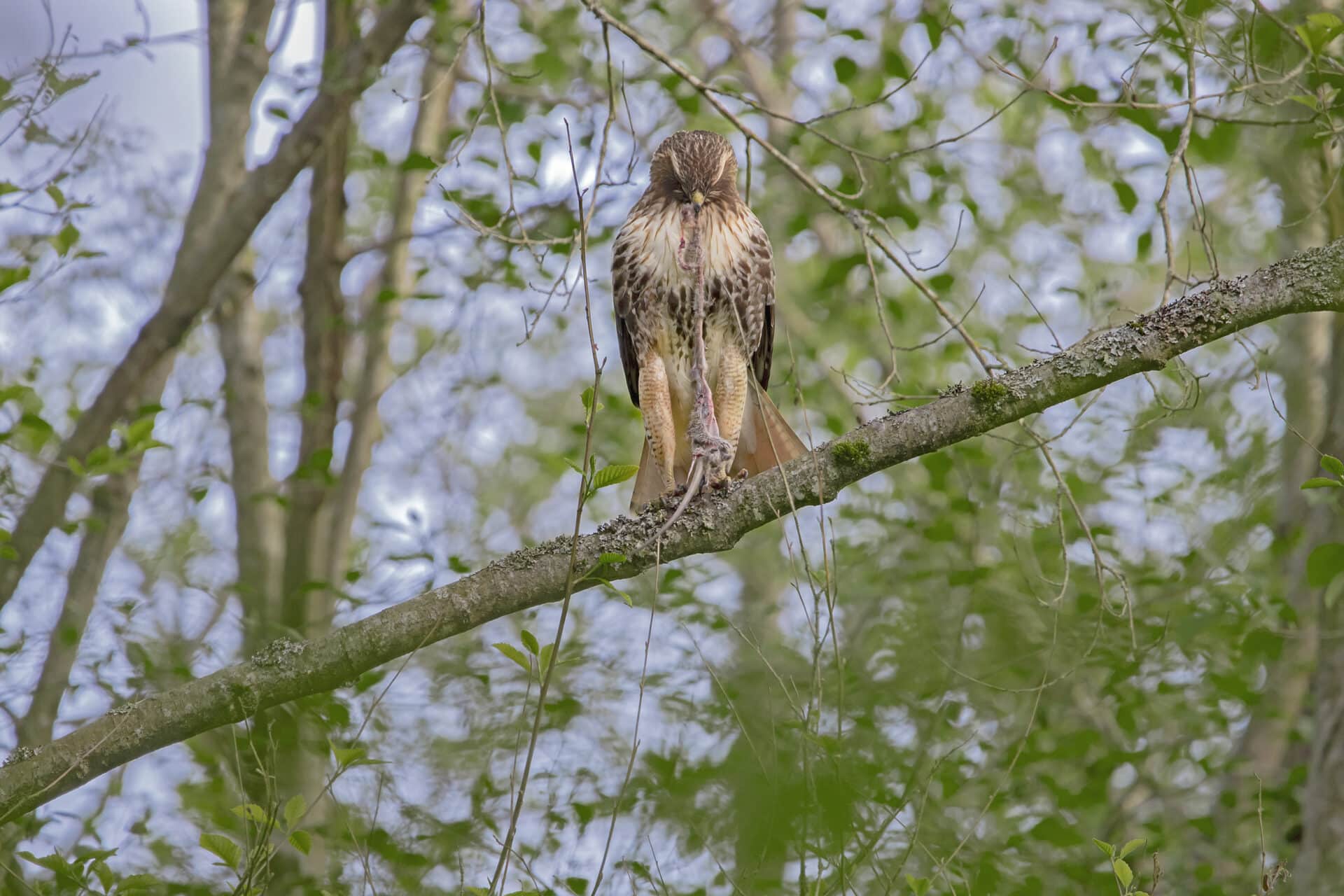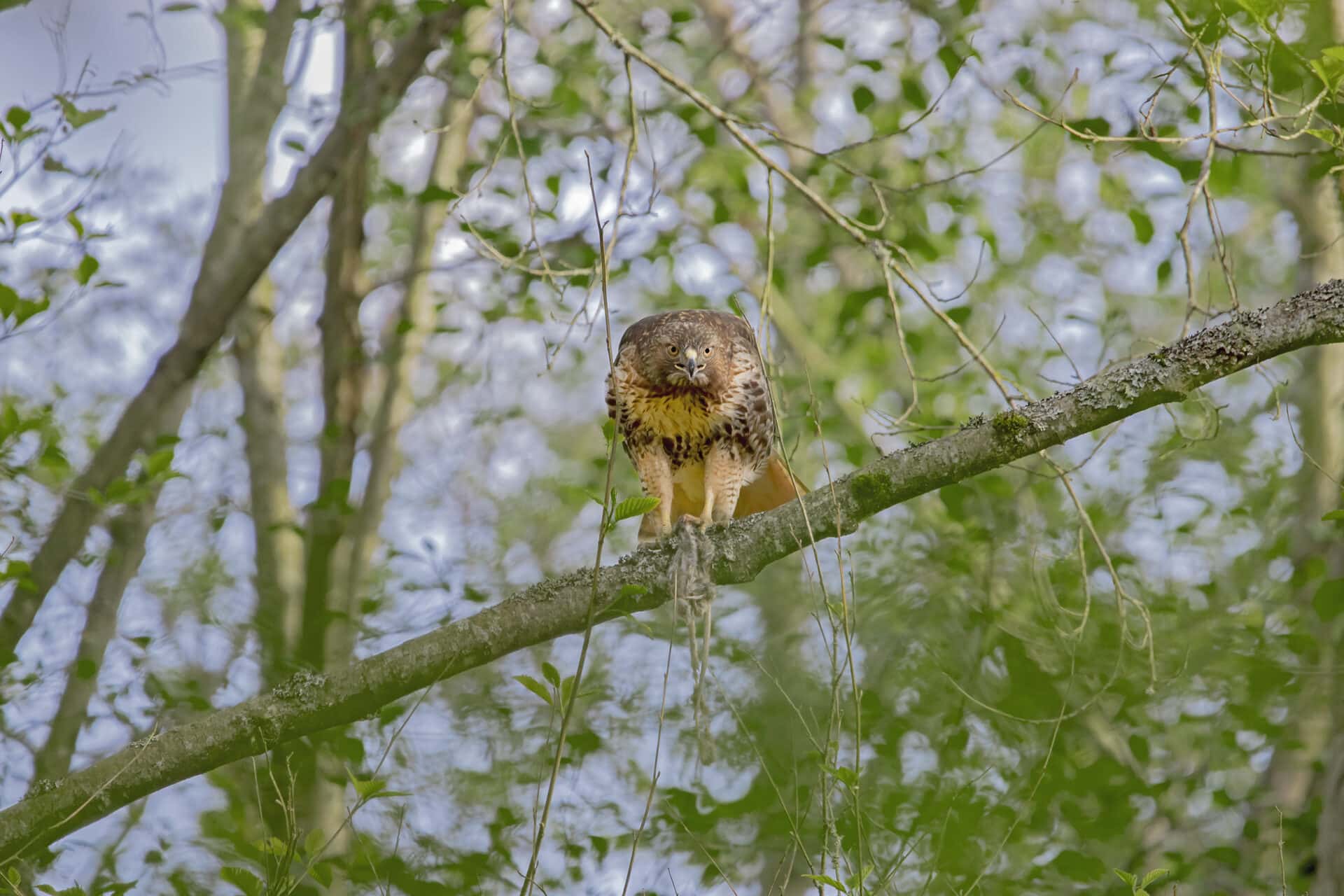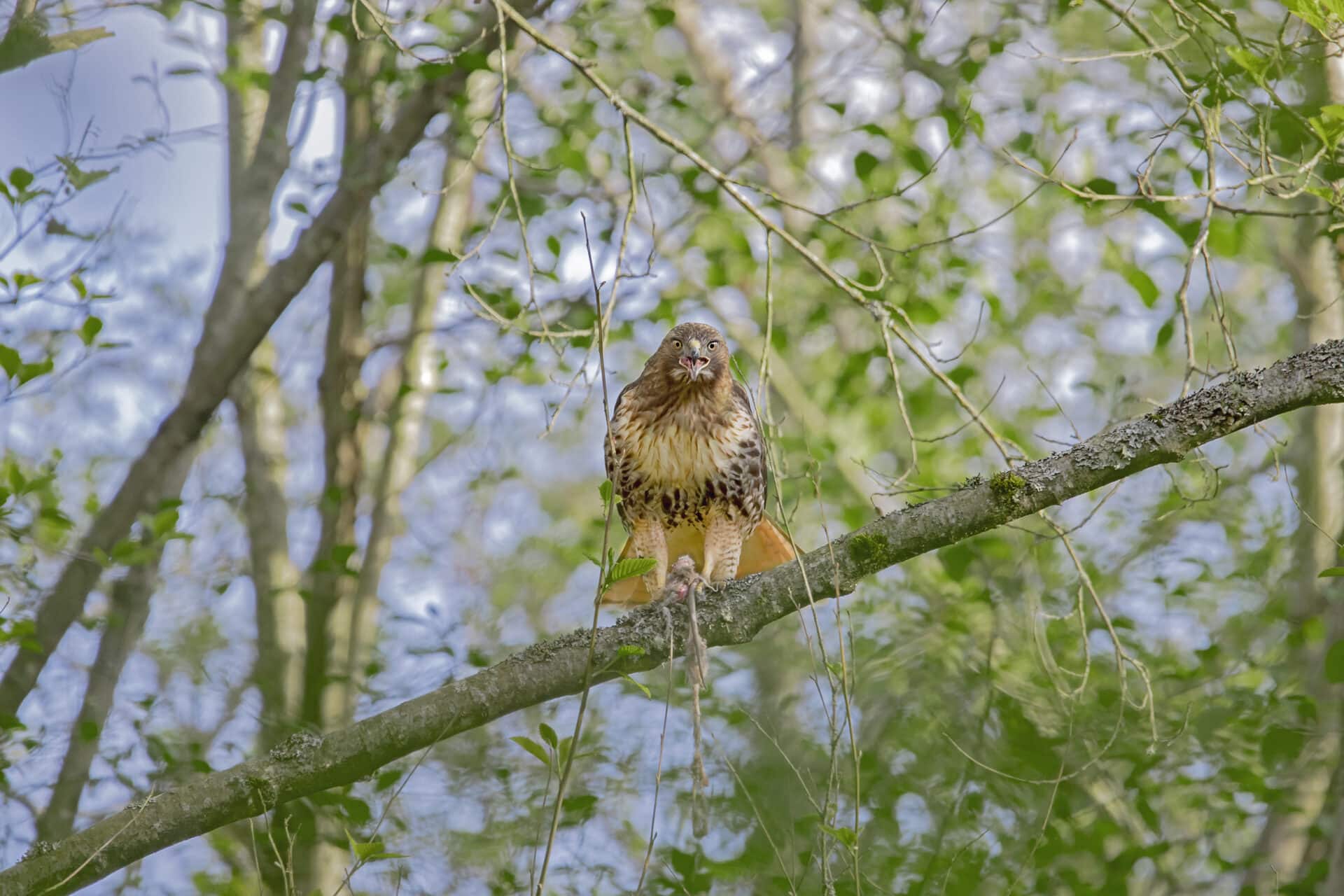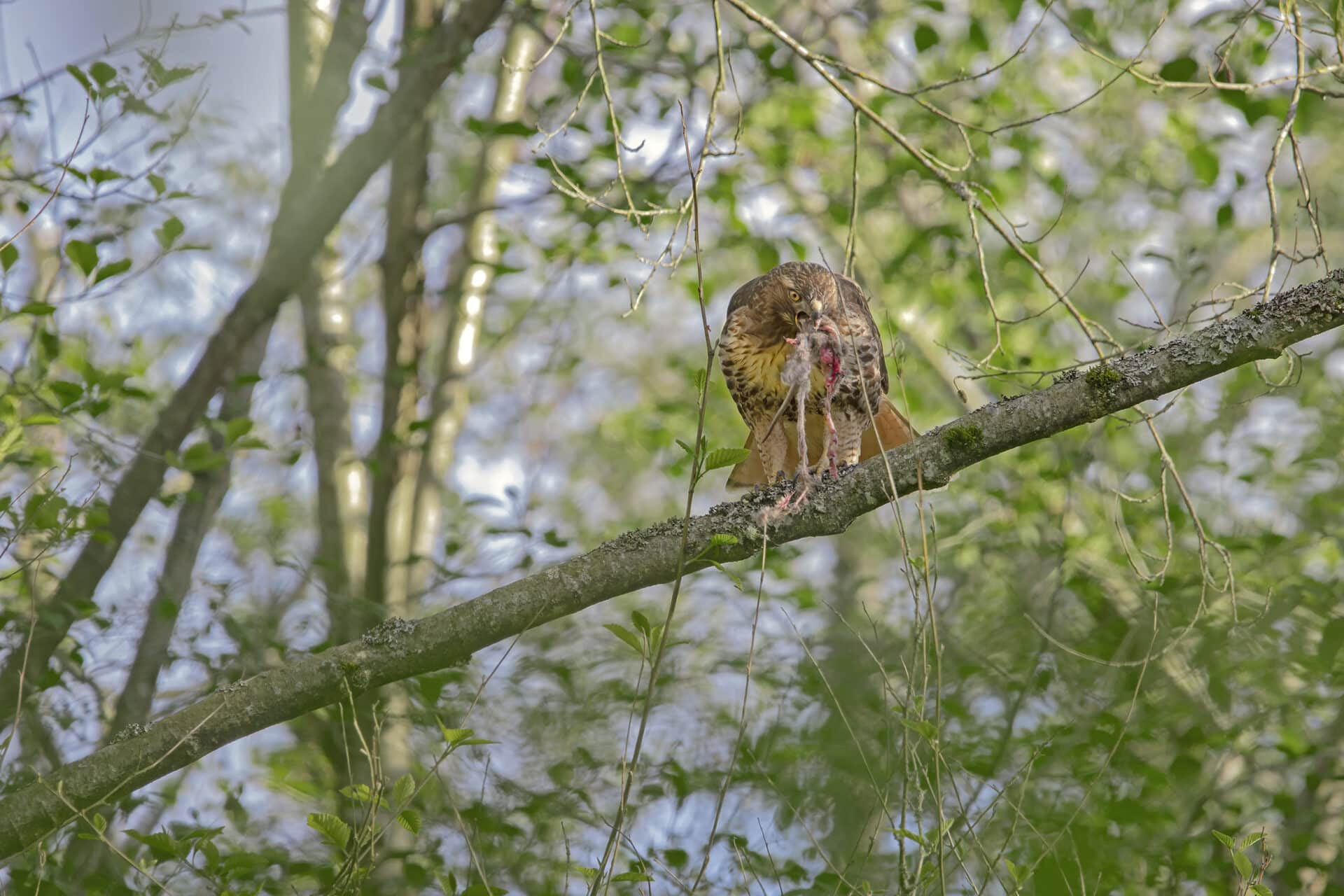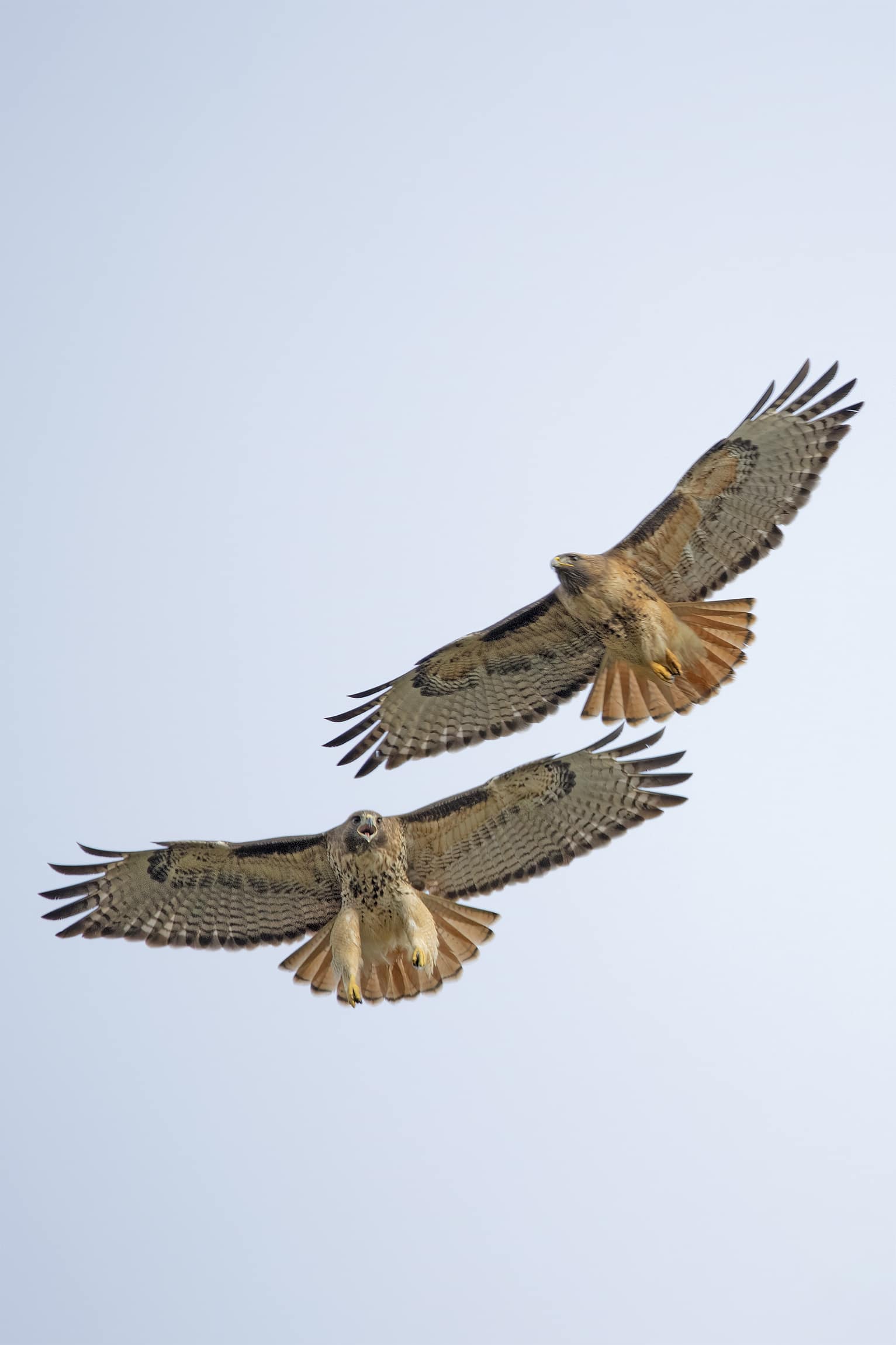Red-tailed hawks are incredibly common here in British Columbia. Some days, it seems there’s one sitting on every other lamp post on the highway. But don’t let their commonness fool you, these birds are still incredible to watch and photograph.
Red-tailed hawks have been featured in several of my collections, including the North Delta Watershed collection and the Blackie Spit and Crescent Beach collection, which shows the range of habitats where these birds can thrive.
Quick Facts:
Latin Name: Buteo jamaicensis
Size: Males have a length of 45–56 cm (17.7–22.1 in) and a wingspan of 114–133 cm (44.9–52.4 in); females have a length of 50–65 cm (19.7–25.6 in) and a wingspan of 114–133 cm (44.9–52.4 in)
Lifespan: 10–15 years in the wild
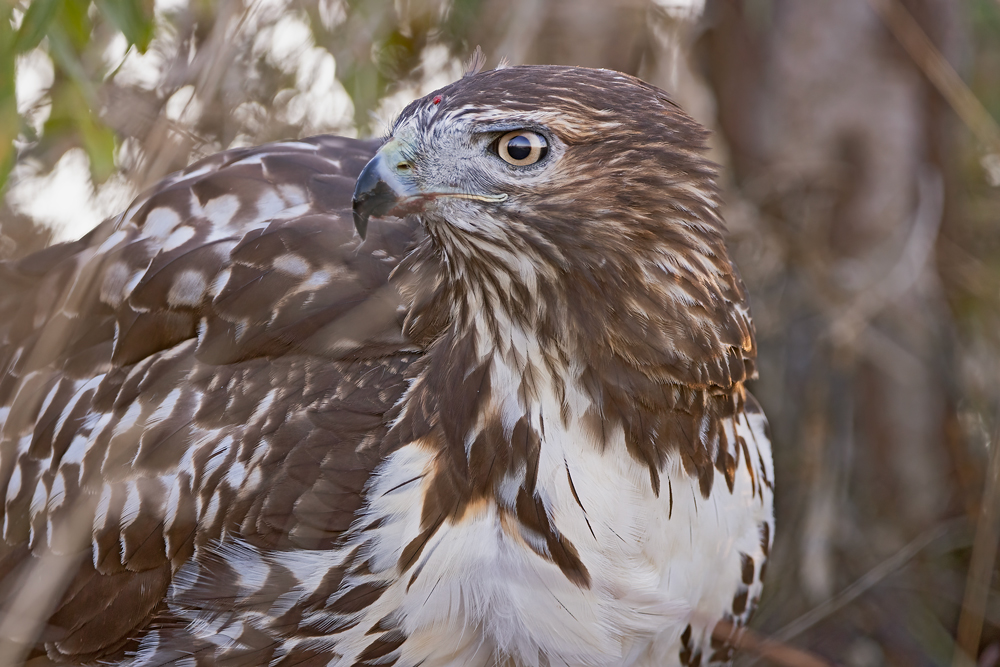
Finding Red-Tailed Hawks
Description
Many red-tailed hawks are brown on their wings and back with a lighter belly, and a signature reddish tail. There is often some barring on the feathers that can be seen well from below.
All About Birds has a great gallery showcasing the different colour differences in different regional populations.
Habitat
Red-tailed hawks thrive in open spaces. They are often seen sitting along highways, sitting high above on street lights and telephone poles where they can scour the land for food.
I have observed them in open areas on the beach as well as soaring above the forests. Since they are found across North America, there are many different habitats that they have adapted to.
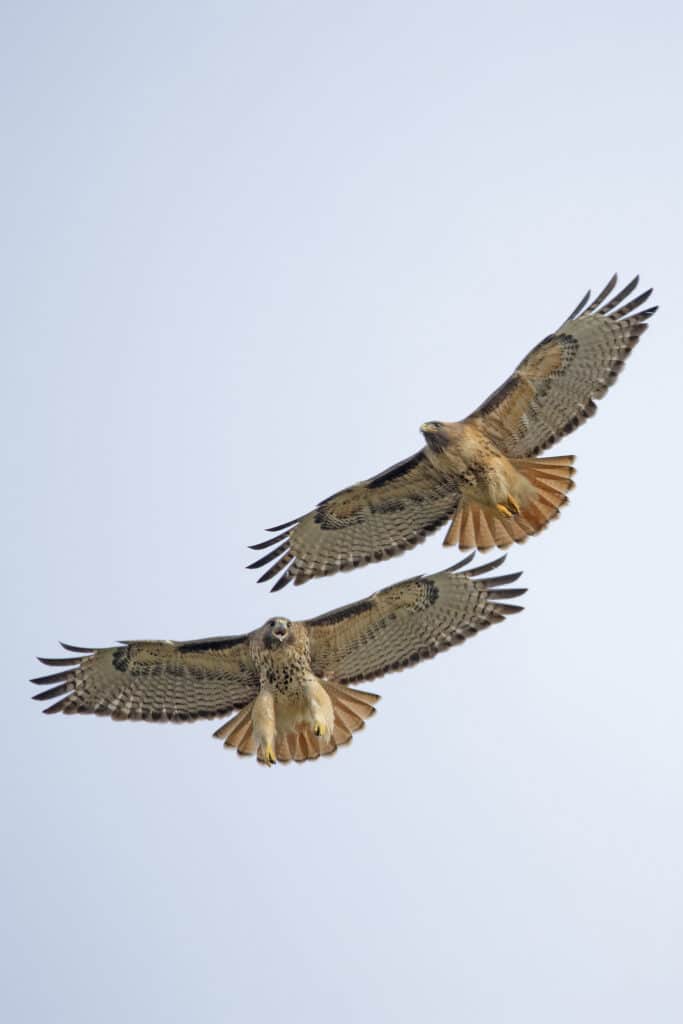
Diet
Like many other birds, the red-tailed hawk’s diet will vary based on region and seasonal availability. Their hunting efforts are typically concentrated on prey that is abundant and easily caught. While they are often seen soaring, hunting primarily occurs from a perch.
Common prey items include:
- Mammals such as voles, rats, rabbits, squirrels
- Birds up to the size of a pheasant
- Reptiles, particularly snakes, frogs, and toads
- Bats and insects
- Carrion
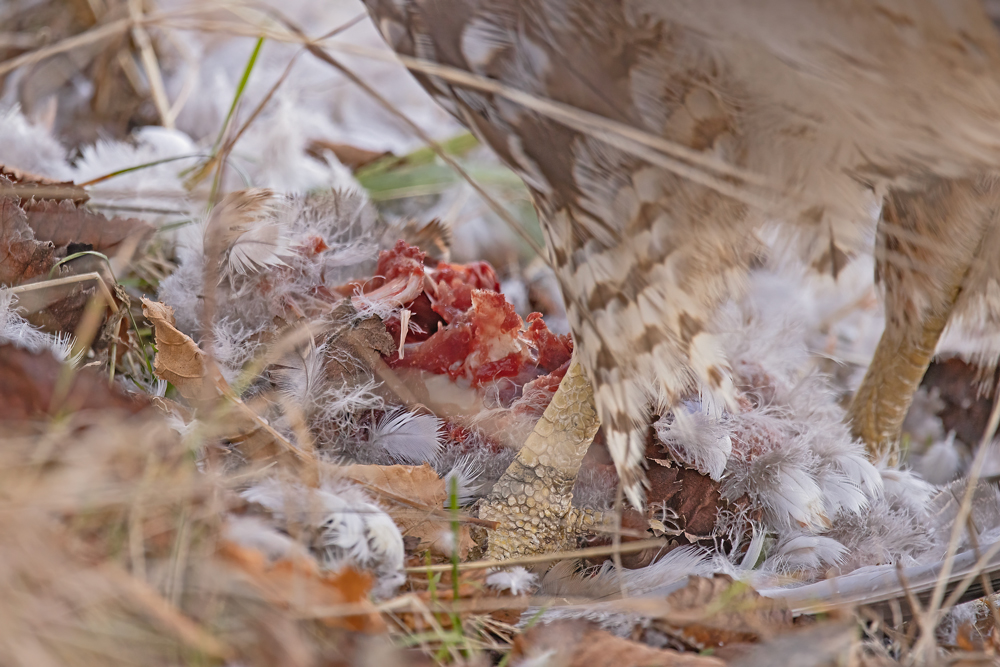
Conservation
The International Union for the Conservation of Nature (IUCN) classifies the red-tailed hawk as “least concern”. Their numbers are estimated to be around 2 million globally.
Threats to the species include habitat degradation. Climate change is causing warmer temperatures in the spring can endanger young chicks in the nest, as well as an increase in wildfires in their grassland habitats. Multiple fires can prevent grassland recovery.
Scroll down on the Audubon Field Guide page on red-tailed hawks to see their interactive map on how climate change will affect these birds.
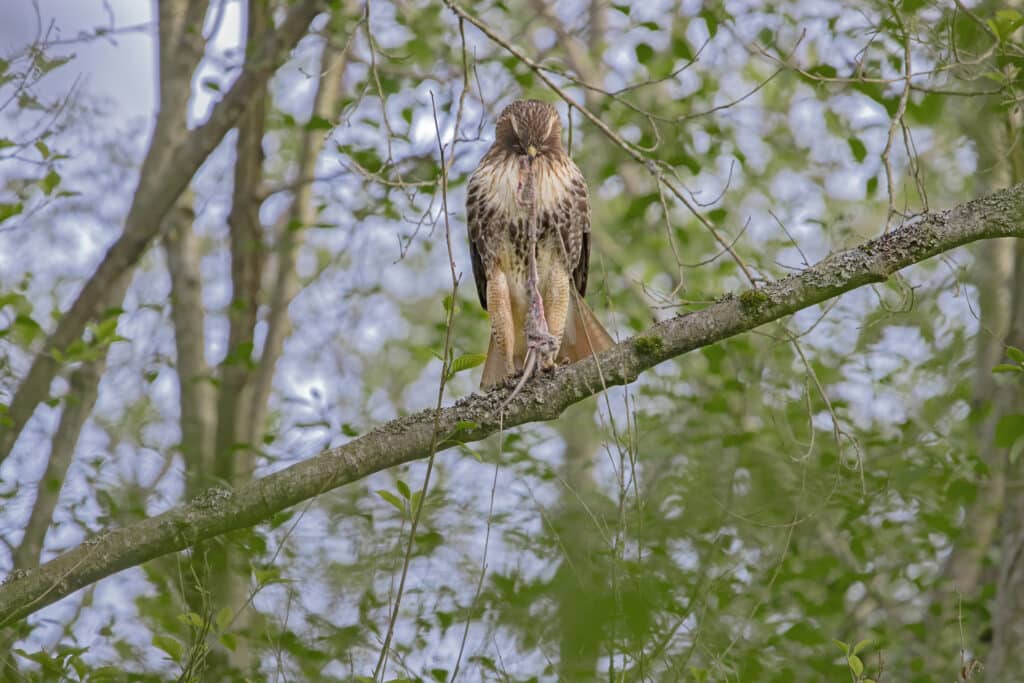
Red-Tailed Hawk Gallery
Sources
Like this post?
Thanks for reading! You can support me in making more posts like this by buying me a coffee, visiting my store, and subscribing to my newsletter. Follow me on Instagram for daily posts.

